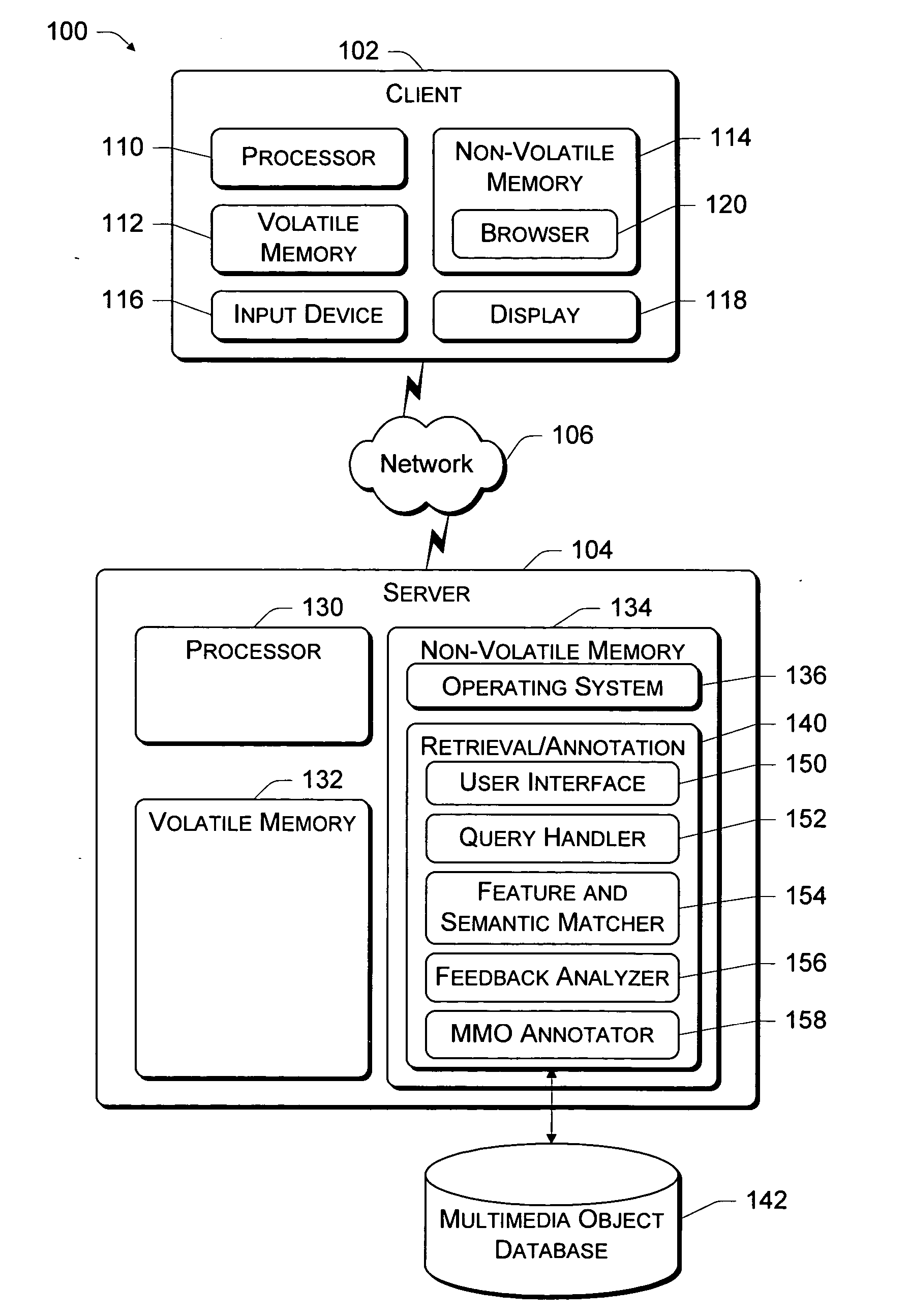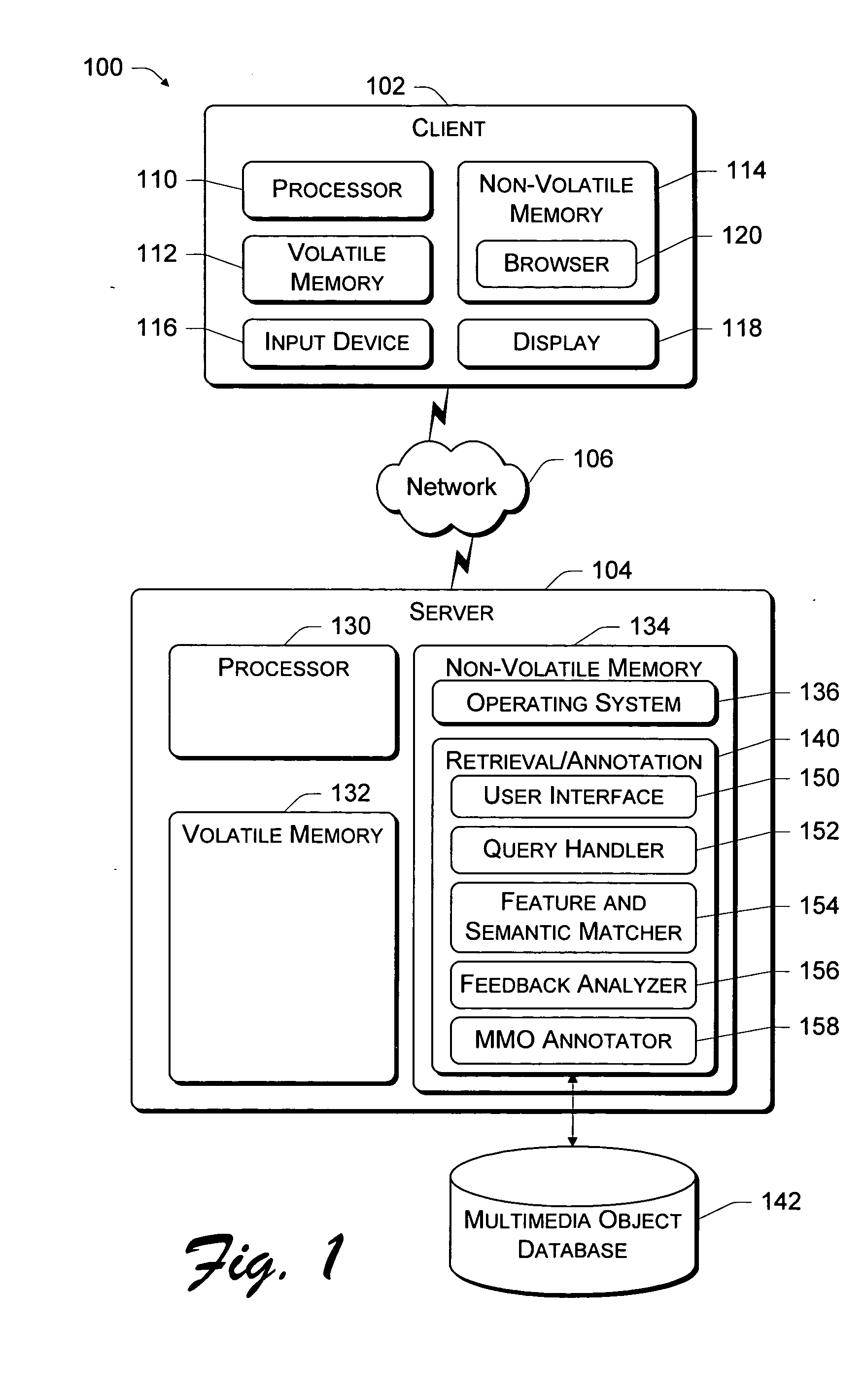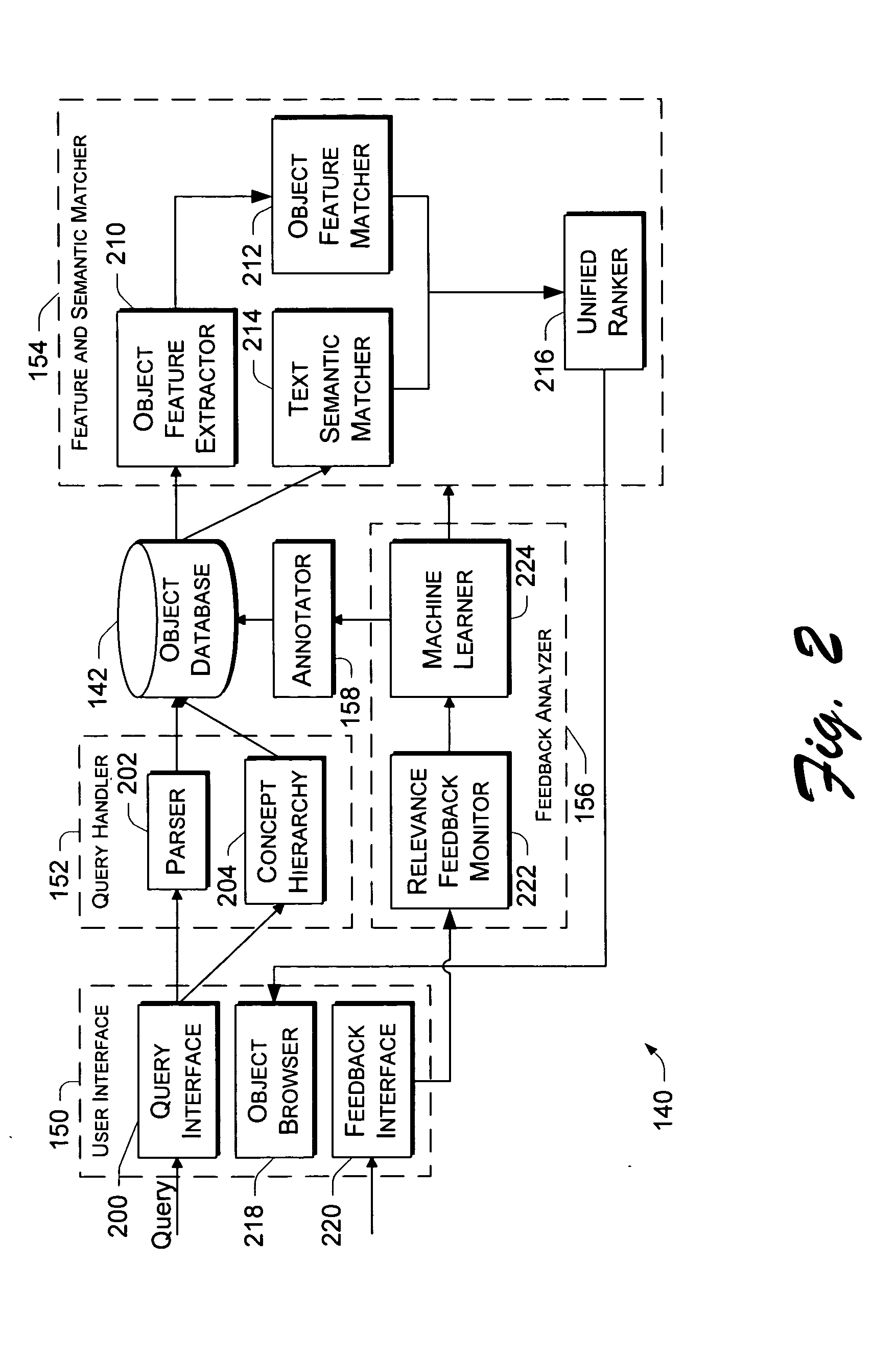Semi-automatic annotation of multimedia objects
a multimedia object and semi-automatic technology, applied in the field of semi-automatic annotation of multimedia objects, can solve the problems of introducing errors due to subjective users, search may return entirely irrelevant images, and manual annotation is obviously a labor intensive and tedious process, so as to improve the annotation coverage and annotation quality of the object database, strengthen associations, and weaken associations
- Summary
- Abstract
- Description
- Claims
- Application Information
AI Technical Summary
Benefits of technology
Problems solved by technology
Method used
Image
Examples
Embodiment Construction
This disclosure describes an annotation system for annotating multimedia objects, such as digital images, video clips, and audio objects, with semantically relevant keywords. The annotation system employs a “semi-automatic” annotation technique that captures the efficiency of automatic annotation and the accuracy of manual annotation. The semi-automatic annotation technique employs both keyword-based information retrieval and content-based image retrieval techniques to automate searches for objects, and then encourages uses to provide feedback to the result set of objects. The user identifies objects as either relevant or irrelevant to the query keywords and based on this feedback, the system automatically updates associations between the keywords and objects. As the retrieval-feedback-annotation cycle is repeated, the annotation coverage and annotation quality of the object database is improved.
The annotation process is accomplished in a hidden / implicit fashion, without the user...
PUM
 Login to View More
Login to View More Abstract
Description
Claims
Application Information
 Login to View More
Login to View More - R&D
- Intellectual Property
- Life Sciences
- Materials
- Tech Scout
- Unparalleled Data Quality
- Higher Quality Content
- 60% Fewer Hallucinations
Browse by: Latest US Patents, China's latest patents, Technical Efficacy Thesaurus, Application Domain, Technology Topic, Popular Technical Reports.
© 2025 PatSnap. All rights reserved.Legal|Privacy policy|Modern Slavery Act Transparency Statement|Sitemap|About US| Contact US: help@patsnap.com



